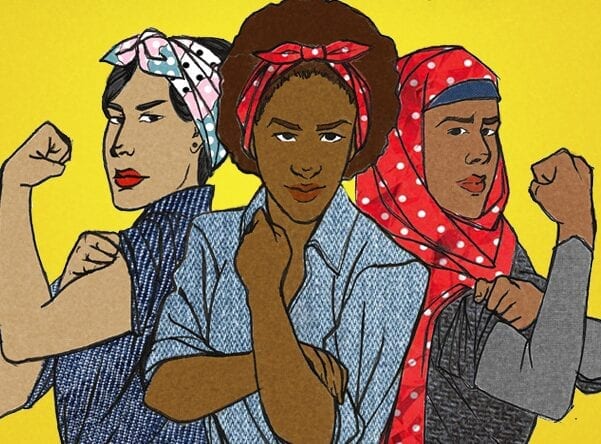In feminist circles, ‘intersectionality’ has become something of a buzzword. It connotes straying away from the traditional definition of feminism as something universal and all-encompassing and instead acknowledging that specific sections of society demand different things from the feminist cause. For example: transgender women face a different battle compared with of women of colour, therefore their feminism must function in a different manner, with different goals being set, in order for them to overcome their oppression. Obviously there is overlap, people are wonderfully complex and can be oppressed by multiple factors: be it their skin colour, sexual orientation or economic situation. However, the emphasis rests on diverting away from the previous principle of universality and acknowledging that a Western model of feminism – generally championed by straight white cisgender women -cannot possibly work for everybody working towards the empowerment of women.
I mention intersectional feminism because I believe it to be relevant to the incredibly pertinent topic of Female Genital Mutilation. My feminism falls mainly under the aforementioned ‘Western’ model and I am incredibly proud to be part of this movement. However, it disappoints me that intersectional feminism appears to be used occasionally as an excuse to ignore the way in which oppression can function in other cultures or other societal modes which do not fit the Western model. So whilst what I deem the ‘Western’ model may focus on the presentation of women in the mainstream media, shunning the sexualization of powerful women, the continual focus on female aesthetics and the debate on female body hair (all of which are important and relevant topics which should not be shunned as ‘petty female complaints’), it often fails to give relevance to the way in which women from other cultures continue to be subjugated.
Female Genital Mutilation is a horrific and ongoing crime, the circumcision of young girls for the purpose of religious and moral ‘sanctity’ results in physical and mental trauma for those who do not have the right to choose whether or not they participate in this procedure. It is rarely mentioned in the mainstream Western media as it is largely women of colour who have historically endured this treatment and continue to do so today – as seen in that the vast majority of recorded cases of FGM are concentrated in 27 African countries. FGM can be classified as a human rights abuse and a belief in intersectional feminism can not justify its continual neglect in the Western media. Just because you believe in intersectional feminism doesn’t mean that you shouldn’t acknowledge the sufferings of women who fall outside of your feminist bracket – it simply means that you shouldn’t force your version of feminism upon them to rectify their oppression.
When the feminist movement was first developed, it did not incorporate women of colour, transgender women, homosexual women or women from poorer economic backgrounds. We should be proud of our progress in promoting inclusiveness as feminism marches on into its fourth wave of being. We should also ensure that we can continue to make further progress in refusing to exclude anybody from the movement. Using a universal ‘one-size-fits-all’ form of feminism is exclusion. Neglecting to acknowledge the painful consequences of arranged marriages, FGM and Sharia Law is exclusion. How can equality truly be obtained if only a certain sub-section of women are able to be empowered. Admittedly, trying to fight transgender issues from an exclusively cisgender platform is the equivalent of trying to cure a broken leg with paracetamol, however, failing to even acknowledge the marginalization that transgender women face is akin to amputating said leg completely.
Words by Beth Chaplow
